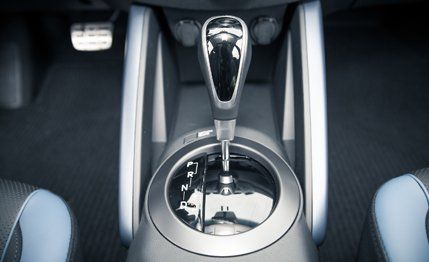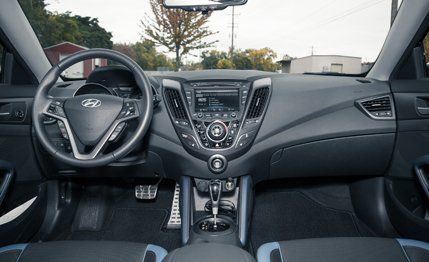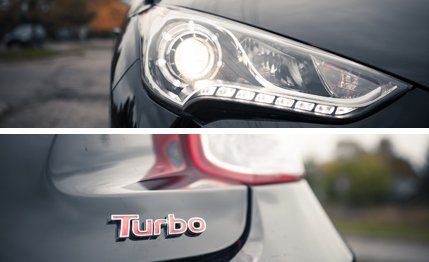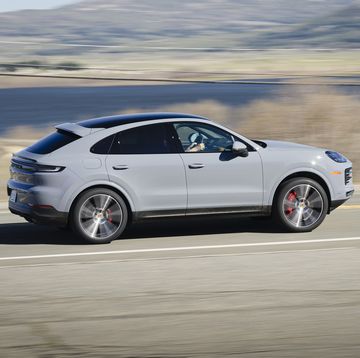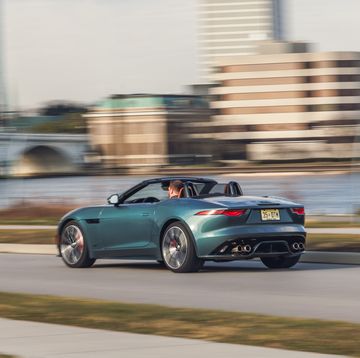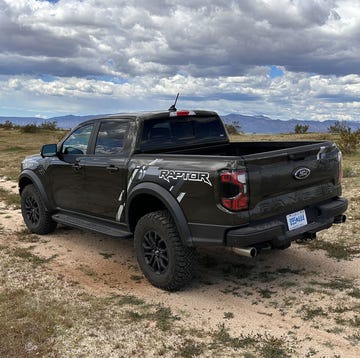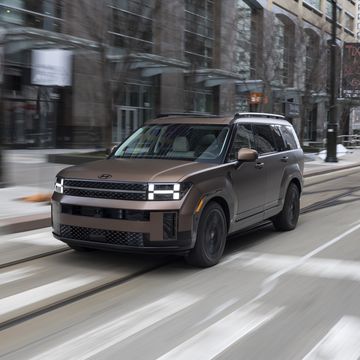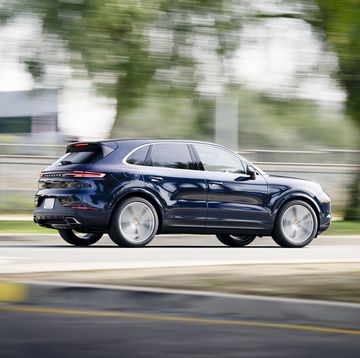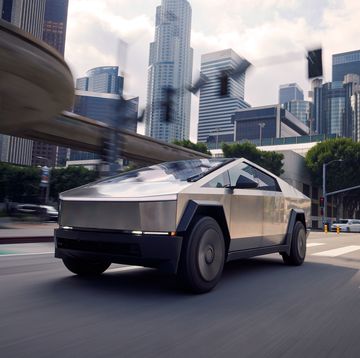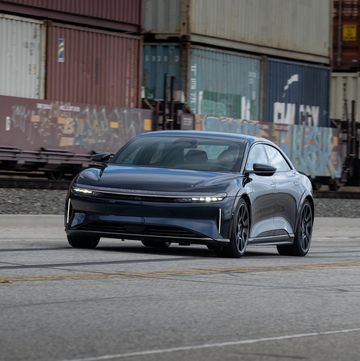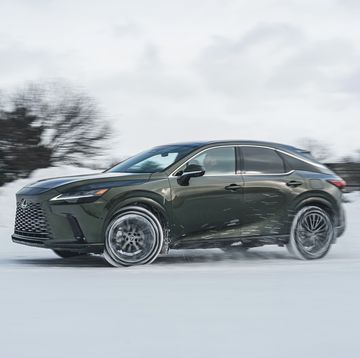Life is full of unexpected detours, and here’s a good illustration: We set out to quantify the performance distinctions between two new Hyundai Veloster Turbos, one equipped with a manual transmission, the other with an automatic. But we seem to inadvertently have also conducted a tire test. Or, more accurately, a demonstration of the difference between performance rubber and the all-season tires worn by most new cars these days.
The distinctions are telling. Numbers in a minute. First, back to our original mission, with a look at the transmissions.
A Pair of Sixes
As with the naturally aspirated Veloster, the Turbo’s transmission choices are both six-speeds: one manual, one automatic. But the automatic option in the base Veloster is a dual-clutch automated manual—officially, the EcoShift dual-clutch transmission, or DCT for short. It’s Hyundai’s first of the type.
The Turbo’s automatic, however, is a conventional one, with a manual shift mode. Hyundai’s DCT won’t handle the torque (195 lb-ft at 1750 rpm) generated by the turbocharged and intercooled version of the Veloster’s direct-injected 1.6-liter four-cylinder.
This is not a bad thing. In our earlier test, we weren’t impressed by the DCT’s what’s-your-hurry shift speed, whereas the Turbo’s six-speed automatic pops its shifts relatively briskly, particularly in the Sport setting. It upshifts automatically as redline approaches, manual mode or not, but that’s true of the DCT as well.
The paddle shifters are handily placed behind the horizontal spokes of the three-spoke steering wheel, finger reachable from the rim, and rotate with the wheel. Paddles fixed to the column are preferable to many drivers, since they’re easier to locate while steering. But the Hyundai setup works well, and the transmission also functions well in full automatic mode, with all but seamless shifts and prompt kickdowns for passing.
The manual transmission, for its part, is a pleasure to employ, with precise engagements and a forgiving clutch. It saves some dough, too; the automatic costs $1000.
Disparities
Hyundai’s manual is not a launch enhancer, however. For our instrumented test of a naturally aspirated manual, we recorded 0-to-60-mph acceleration in 8.5 seconds and a quarter-mile run of 16.7 seconds at 84 mph. The DCT-equipped version was even slower: 0 to 60 in 9.1 seconds, the quarter in 17.0 at 83 mph. In the mid-1980s, those numbers would have been respectable. Today, well, they’re slow.
The pace picks up with these Turbos, of course, thanks to 201 hp versus the unboosted 138 and increased torque across a broad curve. But we weren’t prepared for the automatic’s advantage in the 0-to-60 sprint—6.8 seconds, a half-second quicker than the manual version.
The test report noted that the manual’s gearing bumped against the rev limiter twice en route to 60 mph, requiring two upshifts. Worth a half-second versus the automatic? Our test-track hotshoe reported that “the 1-2 upshift sucks life from the engine.” It got better after that: 15.4 seconds at 90 mph for the automatic in the quarter-mile, 15.5 at 91 for the manual.
For contrast, the DSG-equipped VW GTI we tested in 2010 hit 60 mph in 6.1 seconds and ran the quarter in 14.7 at 96 mph, although, at 3171 pounds, it outweighed the auto-equipped Veloster Turbo by 192 pounds. Another contrast: We clocked a 2012 Honda Civic Si coupe with a manual (2864 pounds) at 6.3 to 60 and 15.0 at 94 in the quarter. Turbo hotties such as the Mazdaspeed 3 and latest Ford Focus ST are also quicker than either boosted Veloster, although with 50-plus more horsepower, that’s to be expected.
If fuel economy is high on your list of priorities, know that the naturally aspirated Veloster has better EPA ratings than the boosted version: 27 mpg city with the manual, 28 with the automatic, and 37 highway for both. The manual Turbo has an edge versus the automatic on the highway (35 mpg versus 31), but they both get 24 mpg in the city. We recorded 22 mpg with the manual, 24 with the automatic. (Note that the EPA estimates shown here are 1 to 3 mpg lower than earlier numbers listed for 2013 models as a result of an investigation of Hyundai‘s mileage reporting, which revealed most of the maker’s vehicles to be overly optimistic.)


